Tick vs Mite - Pest Control & Identification
Do you have a tick or mite problem? Contact us today to get pest control for mites & ticks!
Mite vs. Tick
What are Ticks?
Ticks are arachnids that feed on blood and are closely related to spiders. Ticks hunt by latching on to hosts (such as humans or dogs) as they walk through tick-infested habitats like grass or brush, for example.
Once they attach to the host, they cut through the body and attach their feeding tube (most hosts will not feel this or notice it's occurring). If they are not removed, ticks can feed for hours or even days.
What are Mites?
Mites, on the other hand, are much smaller than ticks but feed off hosts in the same way. Mites can be difficult to spot, but the difference is mites feed off of dead skin rather than blood.
You’ll often find mites where dust (and dead skin cells) are present. This includes spots like dusty lampshades, dirty laundry piles, in your unwashed sheets and neglected spaces like attics.
What Do Ticks Look Like?
Mature ticks are the size of an apple seed while nymphs are about the size of a poppy seed. Most species will appear similar at first glance.
Depending on the species, they range in color from black to brown or reddish brown. Their bodies will swell during and after feeding which may alter their appearance and make them look more dull to the naked eye.
Ticks have eight legs, just like most arachnids with four main legs and two “front legs” called hypostome, that are equipped with barbs to latch onto their host for feeding.

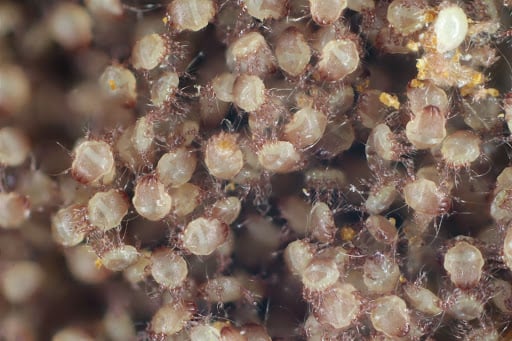
What Do Mites Look Like?
Mites are very difficult to identify without a magnifying glass or microscope due to their size. They are composed of two body parts but will appear as one flat or overall shaped body to the naked eye.
They range in color from bright red, blue, green, tan gray, and brownish depending on the type of mite and life stage.
Mites are often found on plants and dogs and will likely be found in small groups.
What Types of Ticks and Mites are There?
There are thousands of different types of ticks and mites. However, the most common ticks and mites include:
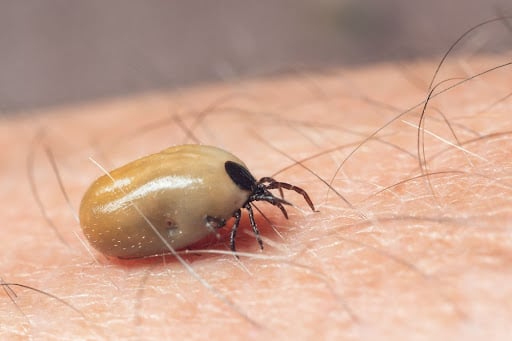
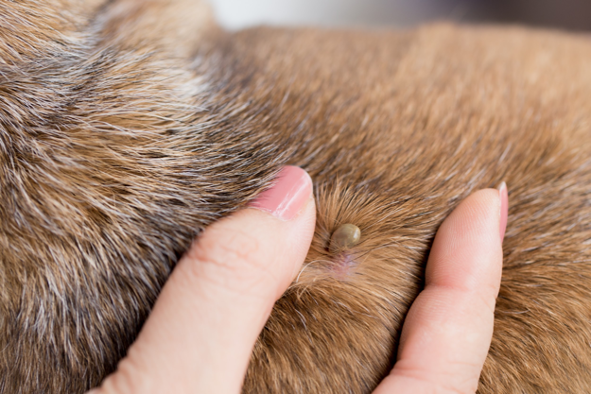
How Do Ticks and Mites Get Inside?
If you find ticks and mites in your home, they are probably entering your space from:
- Pets. Ticks can hitch rides on your four-legged pals. Check your dogs before letting them back inside.
- Pests. Blacklegged tick nymphs are known to get inside via rodents, which is why it’s important to get any infestation taken care of right away.
- People. After you come in from spending time in wooded areas, check yourself and your kids for ticks.
- Outdoor gear and items. After camping, hiking, and being outside, your belongings can accumulate ticks and mites. Check these items thoroughly before storing them in your house.
Why are Ticks and Mites a Problem?
Tick bites are mostly harmless, however, they can cause allergic reactions and other skin irritations. Plus, ticks can pass diseases to humans and pets. Diseases that ticks carry include but are not limited to:
- Lyme Disease
- Babesiosis
- Bartonellosis
- Ehrlichiosis
- Anaplasmosis
- Rickkettsiosis
In the US, it is uncommon for mites to transmit disease to humans. However, they are unpleasant in other ways. They can cause skin irritation and are a total nuisance when they get into your home in large numbers since they commonly infest pets and plants.

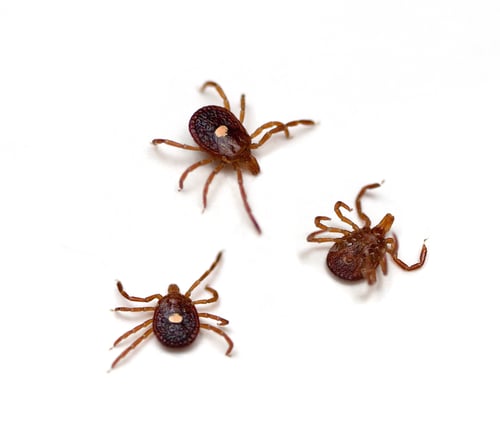
How Long Do Ticks Live?
Ticks can live up to an average of 3 years, depending on the species. Though most ticks will only have about three blood meals in their lifetime!
Ticks spend most of their lifespan out and about in their environment rather than feeding on hosts such as humans or dogs.
How Can Plunkett’s Solve My Ticks and Mites Problem?
How Plunkett's Can Control Ticks
Plunkett’s will concentrate on the areas most likely to harbor ticks such as paths, trails, property lines, and fence rows. In heavily tick-infested areas, like tall grasses, one of our pest management specialists will apply a residual pesticide. The best time to do so is in early spring so we can eliminate overwintering larvae and nymphs.
For both ticks and mites, Plunkett’s may also recommend eliminating any pest rodents in the area surrounding your home. We’ll accomplish this with the rodenticides and/or rodent traps.
How Plunkett's Can Control Mites
To treat for clover mites, we will professionally apply residual insecticide spray around the perimeter of your home. We apply this spray in a band extending 2 feet up and 6-10 feet out from the structure’s foundation. It’s very important that we apply this treatment in late March or early April to maximize its effectiveness. In some cases, we may also apply indoor crack and crevice pesticides.
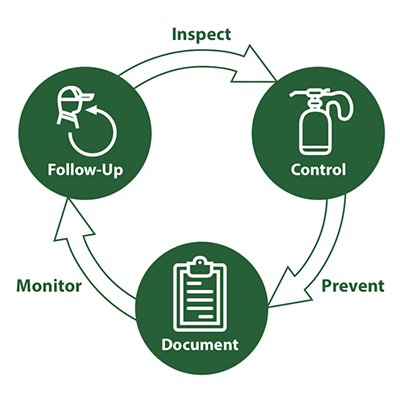
Tick & Mite Control With Plunkett's
At Plunkett’s, our goal is to help you quickly, conveniently, and in the most cost-effective way. We make every effort to be with you asap, usually within a day or two.
Frequently Asked Questions
Are Ticks Active Year-Round?
The short answer: yes. Ticks remain a threat all year long. The blacklegged deer tick becomes especially active during the fall months due to its lifecycle. Learn more about how these pesky pests stay and alive and thrive in the cold!
Do Ticks Fly?
Thankfully, ticks cannot fly or jump. Ticks move around their environment using their third and fourth pairs of legs that will never take flight.
How Do Ticks Find You?
For ticks, hunting is all about finding the right opportunities. They wander to a good hunting site and simply… wait. When prey finally passes near them, they climb aboard and cling on. How do ticks always seem to find the right place to “just wait” anyway? The answer to that is a little more complicated… and creepy. Learn more about how ticks find you!
How Do I Prevent a Black-Legged Tick Bite?
When planning an outdoor adventure, there are a few things you should do to protect yourself and your family: wear light-colored clothing—this will make it easier to spot a tick; wear long pants tucked into your socks and a lock-sleeved shirt; make sure you do a “tick check” once you get back indoors. Learn more about preventing bites from black-legged ticks!
Do Dust Mites Bite?
No, dust mites do not bite. Though mites can cause an allergic reaction on the skin, which many people will confuse with a mite bite. They will inhabit similar spaces as bed bugs but will not pierce your skin. Mites become more active during hotter and humid seasons, increasing your chance of an allergic reaction.






